Steven McDonald finds that the baylands outside of San Francisco offer a superb place for observing and painting clouds. Here’s what he’s learned there.
Perhaps the one overarching theme McDonald suggests is to see them as an abstract pattern. “I do know people who look at them realistically, but if you try to paint the exact look of the clouds, it’s like painting a movie,” he says. “If you have a good abstract painting, then people will like it, regardless of whether it’s true to what happened in the sky.”
A second concept McDonald floats is that in a cloud study or a painting with a lot of sky, “It’s about both the sky and the clouds. Neither is dominant. I try to remember that it’s not the sky but an abstract pattern of blues and violets and whites. Some paintings have almost all clouds with little sky, and some are almost all sky, but either way, the general sky shape and the general cloud shape must work with the land portion. It’s an abstract composition using the two elements, and I can’t say what is more important.”
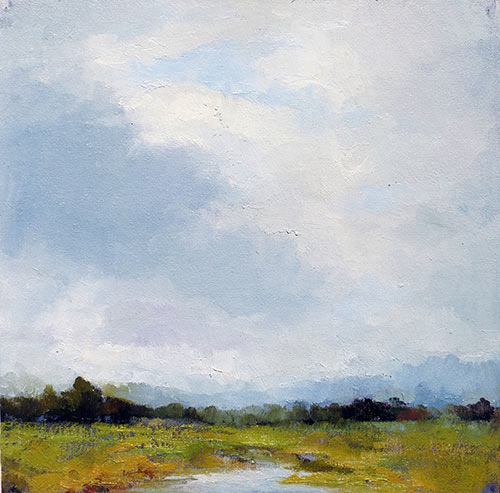
McDonald favors titanium white for tinting clouds, and he uses only filbert brushes, avoiding the sharp corners of flats. “The difference between clouds and the other parts of the landscape is that clouds are not a solid mass and have no distinct shape,” McDonald points out. “This means they should not have sharp edges when you paint them.”
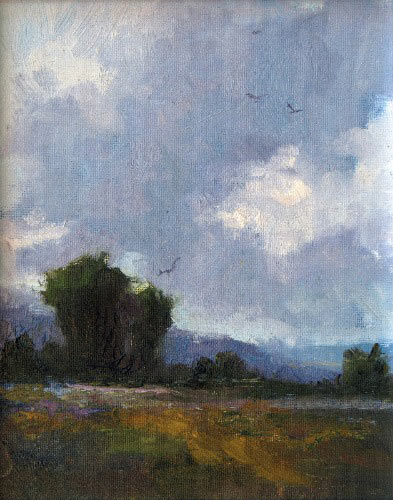
Careful use of color temperature helps create a convincing sky with clouds. McDonald reminds us that even if there are only two sky openings, the sky color in them must gradate from top to bottom in terms of value and color temperature. In terms of the clouds, color temperature expresses the type of weather, and creates form.
“Clouds have to have a dominant temperature,” says McDonald. “So storm clouds, I may paint with all violets or neutral blues. Any time I have strong sunlight, I make the clouds warm — on sunny days or when there are just a few clouds, I go for a bright warm, maybe just titanium white and a little cadmium orange for contrast against the sky color. Also, by adding a warm color to the closest part of the cloud, you can have it read in three dimensions, and clouds need to be either dominantly warm or cool and light or dark — if it does not have a clear dominance, it creates a patchwork effect and disenchants the viewer.”
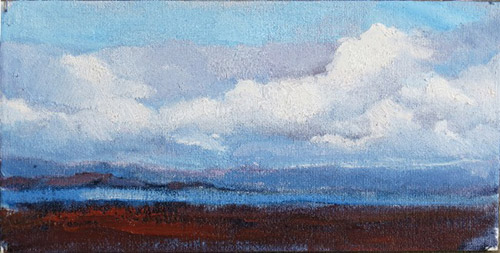
McDonald hasn’t studied the physics of clouds beyond their optics. “I have concentrated on how the light filters through them,” says the artist. “Thick clouds act almost like a solid object, with light on one side and shadow on the other. The dark of the cloud will only be about as dark as the sky. But sometimes there is much variety, so it can go from light to shade to light again across the cloud.” He paints on canvas he tones quickly at the start, choosing a color temperature that suits the day. “I may go with a tone for contrast against sky color, especially on a sunny day — I’ll tone with thinned transparent red oxide,” says McDonald. “On a winter day or a cool day, or when I want a more peaceful painting, I’ll go in with a cool wash, perhaps Payne’s gray or ultramarine blue.” He usually paints the clouds in first, then the sky color.
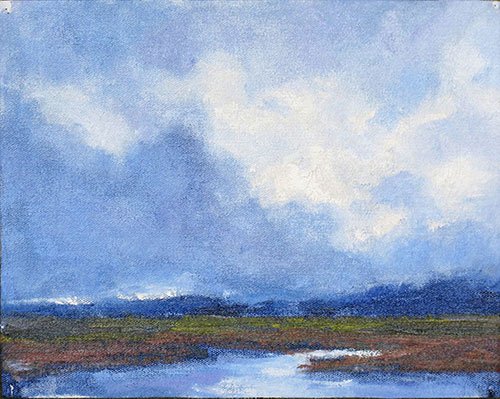
Why the baylands? For one thing, McDonald lives in nearby Sunnyvale, California. But also, it’s because the baylands are mostly flat, and the nearby ocean promises interesting weather patterns and moisture from the sea. “The baylands offer a very good format for framing the clouds,” McDonald says. “Instead of hills or big trees, you have wide narrow plains. That gives me a strip at the bottom of the composition to balance out cloud formations. Most of the painting can be about the clouds. Also, there’s more vertical movement in clouds at the baylands than in other parts of the country I’ve seen. I think the sea air creates a lot of variety in the clouds; we get giant storm clouds, wispy thin cirrus clouds, vertical ones, horizontal…”
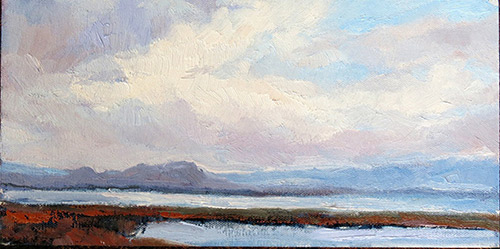
But as McDonald said above, the clouds are usually changing, quickly and constantly. Plein air painters are warned against chasing the light — how about chasing the clouds?
“The trick is, when I’m doing the first sketch, even before I do a value study, I capture the shape or just the general movement of the clouds,” McDonald says. “Then it’s gone, so I have to stick with that for rest of the painting.” He does improvise somewhat, especially for the sake of the composition. This is no easy going. “It took me a few years of painting clouds before I was good enough to make some up and get away with it,” says McDonald, “but there is going to be some making up of the clouds.”

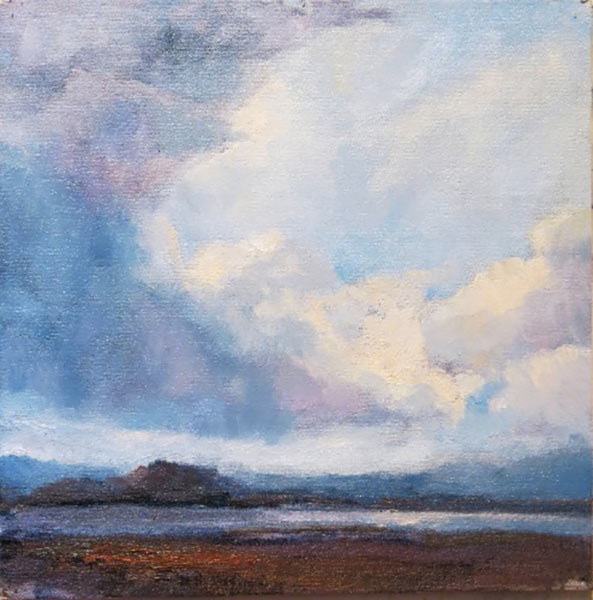




Beautiful clouds, sky colors, technique inspiring.
Am an amateur painter, used trisket years ago
to save clouds! Hope to travel someday to the
Bay Area to capture west coastal scene, plein air.
Best regards, Rose B.